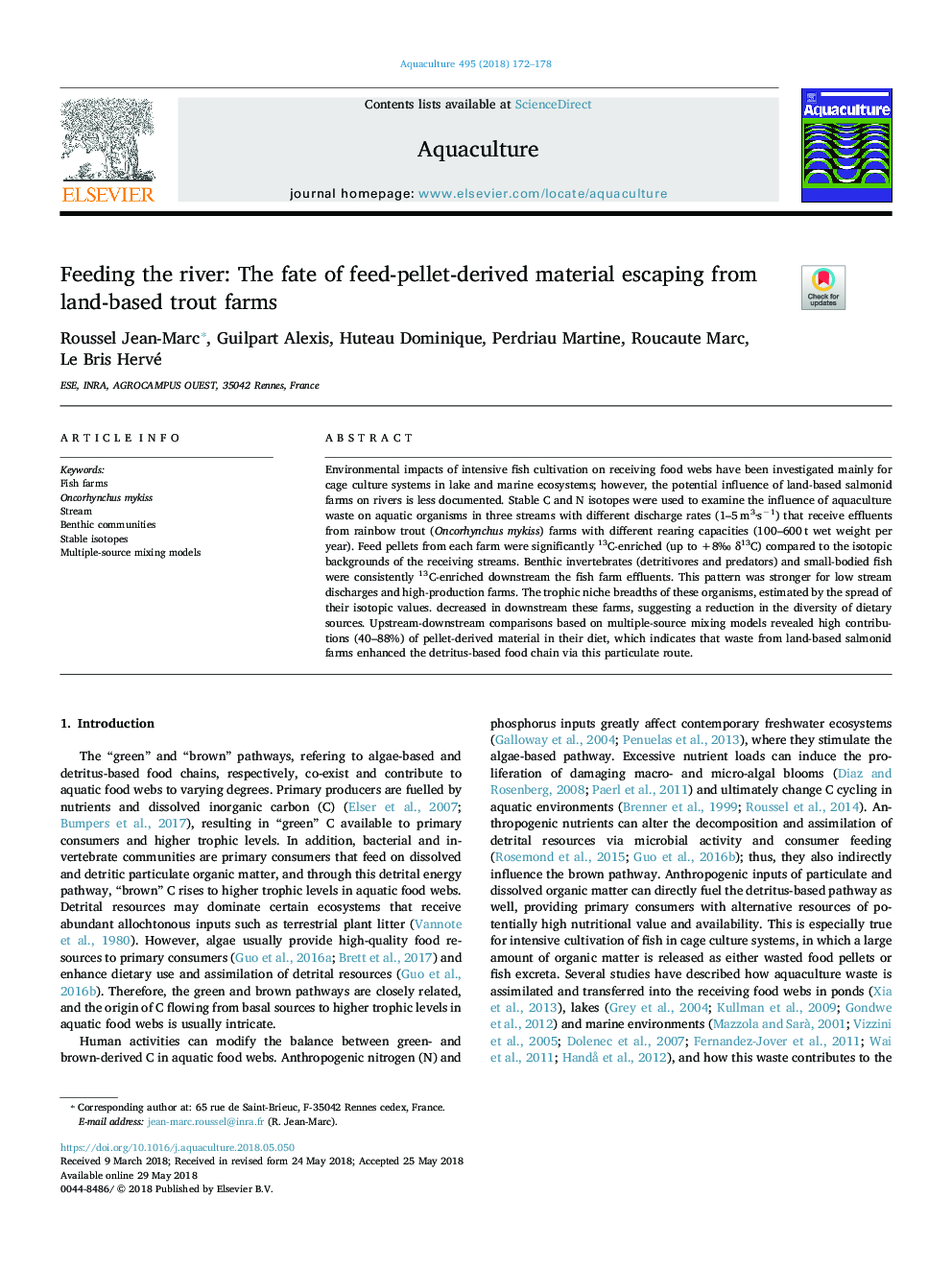| کد مقاله | کد نشریه | سال انتشار | مقاله انگلیسی | نسخه تمام متن |
|---|---|---|---|---|
| 8493097 | 1552793 | 2018 | 7 صفحه PDF | دانلود رایگان |
عنوان انگلیسی مقاله ISI
Feeding the river: The fate of feed-pellet-derived material escaping from land-based trout farms
ترجمه فارسی عنوان
تغذیه رودخانه: سرنوشت مواد مشتق شده از خوراک پلت فرار از مزارع ماهی قزل آلا مبتنی بر زمین
دانلود مقاله + سفارش ترجمه
دانلود مقاله ISI انگلیسی
رایگان برای ایرانیان
کلمات کلیدی
موضوعات مرتبط
علوم زیستی و بیوفناوری
علوم کشاورزی و بیولوژیک
علوم آبزیان
چکیده انگلیسی
Environmental impacts of intensive fish cultivation on receiving food webs have been investigated mainly for cage culture systems in lake and marine ecosystems; however, the potential influence of land-based salmonid farms on rivers is less documented. Stable C and N isotopes were used to examine the influence of aquaculture waste on aquatic organisms in three streams with different discharge rates (1-5â¯m3·sâ1) that receive effluents from rainbow trout (Oncorhynchus mykiss) farms with different rearing capacities (100-600â¯t wet weight per year). Feed pellets from each farm were significantly 13C-enriched (up to +8Ⱐδ13C) compared to the isotopic backgrounds of the receiving streams. Benthic invertebrates (detritivores and predators) and small-bodied fish were consistently 13C-enriched downstream the fish farm effluents. This pattern was stronger for low stream discharges and high-production farms. The trophic niche breadths of these organisms, estimated by the spread of their isotopic values. decreased in downstream these farms, suggesting a reduction in the diversity of dietary sources. Upstream-downstream comparisons based on multiple-source mixing models revealed high contributions (40-88%) of pellet-derived material in their diet, which indicates that waste from land-based salmonid farms enhanced the detritus-based food chain via this particulate route.
ناشر
Database: Elsevier - ScienceDirect (ساینس دایرکت)
Journal: Aquaculture - Volume 495, 1 October 2018, Pages 172-178
Journal: Aquaculture - Volume 495, 1 October 2018, Pages 172-178
نویسندگان
Roussel Jean-Marc, Guilpart Alexis, Huteau Dominique, Perdriau Martine, Roucaute Marc, Le Bris Hervé,
